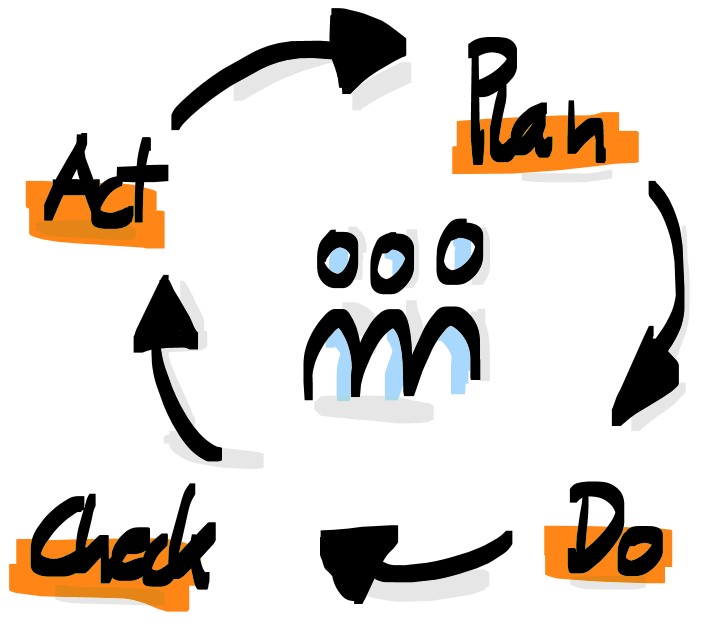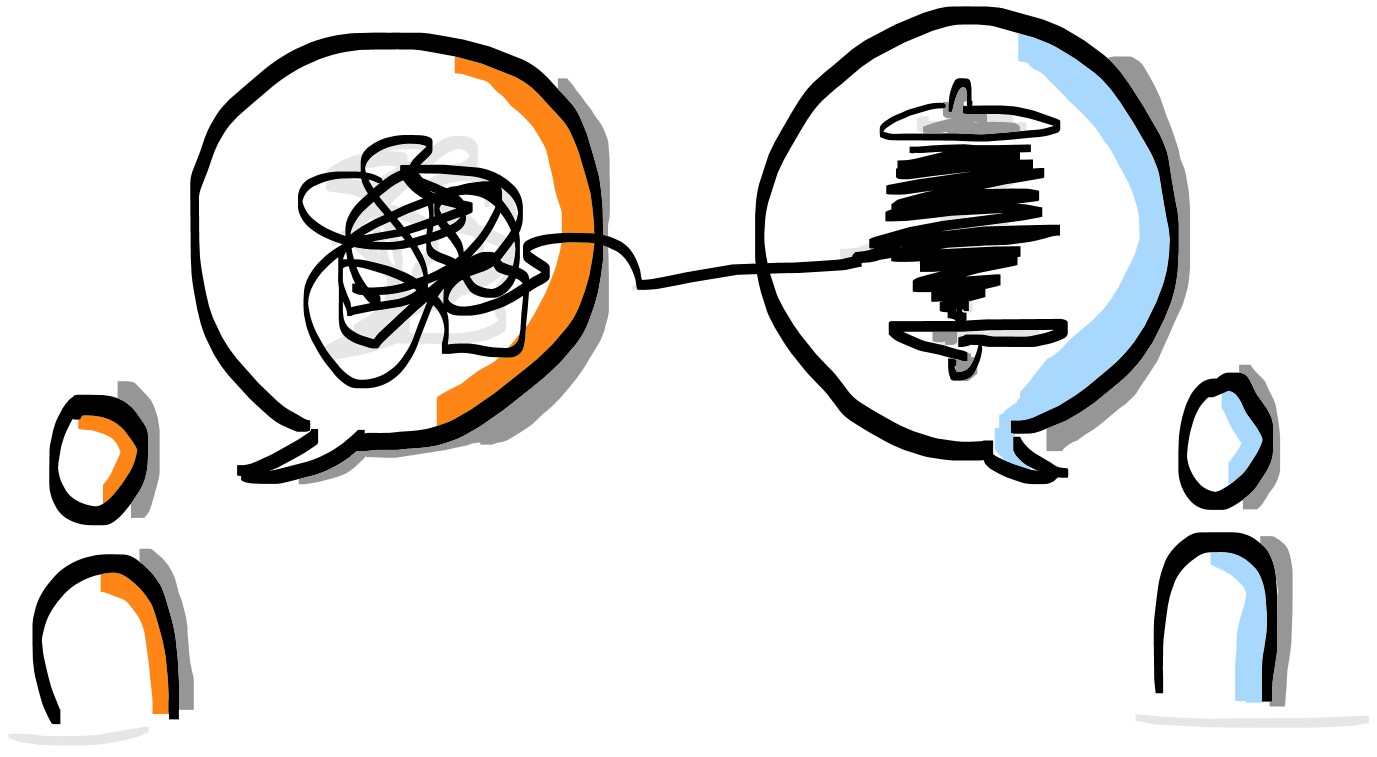Right. That’s an important question. And an evergreen. Ask ten people, and you get fifteen answers. Here then, is the sixteenth, that is MY answer:
AWorking in an Agile way meanst
that teams, departments, divisions and companies come together on a regular and consistent basis (1 to 4 weeks) to check if they are still on the right track or if anything needs to be adjusted.
So we do that JOINTLY and self-organized, that is, not instructed somehow by any kind of management. Wir agieren dabei auf ECHTER Augenhöhe, allerdings NICHT hierarchiefrei, sondern unserer jeweiligen Verantworungen, Job und Rolle entsprechend.
So we don’t tell each other what to do. Instead, everyone does his or her job. Moreover, we let the others do their job.
Conversely, this also means:
In other words: We think, speak and do – we WORK – in FUNCTIONAL structures and no longer in DYSFUNCTIONAL ones. (So we radically recognize that we are all sitting in one boat, where everybody has to do HIS or HER job. No more mutual shifting of responsibility).
So we make sure that we solve REAL problems. And that we are also able to do that.
Above all, those of THE CUSTOMER. And not mainly our own problems or those we consider relevant. (To counter the great danger of working past the customer or the market).
Therefore, we make sure to do REAL work, i.e. to work mainly on customer projects.
And we do everything possible to make sure that we CAN do that. For example, by wasting as little time and energy as possible in pointless and pointlessly long meetings, which are often nothing more than status nonsense (you can tell, e.g., when people don’t show up on time and demonstrate that “one” can afford to keep others waiting meaning: wasting money big time).

In addition, we regularly ask ourselves TOGETHER where we stand on our journey. We do this simply asking ourselves – and, by the way, answering (!) – the following two questions:
- How satisfied is the customer or the market with our work?
- What can we do to organize ourselves better and to work together for the next time?
On the first question about the quality of work: How can we improve our product, our service, our work?
Does the QUALITY of our work fit? Is the customer satisfied with us and our work in detail? Is the customer satisfied with our output in the last weeks – including its quality? What needs to be adjusted? What can/must be improved the next weeks in order to meet the customer’s expectations even better? Where do we want to improve our own planning in order to better fulfill our ideas of quality?

By regularly and jointly asking ourselves these questions – ideally with the customer, with representatives of the customer side, or at least by strongly adopting this perspective ourselves – we regularly improve in these three enormously important areas:
- What we should improve in terms of the quality of our products and services, and therefore what we should plan for.
- What is important to the customer or the market in general.
- How we can improve our planning and the quality of our work.

On the second question about the quality of our collaboration or organization:
The biggest advantage of agile forms of collaboration is that they institutionalize what is written into the DNA of high performance organizations, e.g. lean organizations: to routinely and ALWAYS check what needs to be adjusted or improved in the collaboration in order to adapt to the ever-changing circumstances and to satisfy customers.
So: What has gone well recently, what has gone not so well?
What is particularly important about it? What is the REAL cause? What effective, feasible measure will help us to get better? Without falling into the trap of spinning the big change wheel?
In this way, we constantly adapt our planning and structure to the new realities in small steps, i.e. in a doable (!) way. That way
- we become flexible as an organization. Because by acting at intervals of one to four weeks, we all put ourselves in a position to react and even act. And to do so at a time when it still works well. (As opposed, for example, to cycles of annual top-down planning. Or situations where problems are already so big or convoluted that they seem overwhelming).
- we learn as an organization. And if we do it well, we learn jointly with the customer. Most importantly, we learn what is important to the customer and how to satisfy them.
- we build trust and self-confidence.
- we gradually reduce organizational debts and above all: dysfunctionalities (switching and delay costs, constant preoccupation with oneself, finger-pointing, costly, annoying, unhealthy power games and/or egoisms).
it is possible (again) to contribute to the organization in a value-adding way. - fun in work and/or personal development returns.
- profitability increases (if only because we concentrate more and more on our work and simply leave out unnecessary status and business theater).

That’s basically what I understand by agile working.
If you want to know how this works or can work in detail, read the few pages of the Scrum Guide, which is available for free download.
Very important, because it is often misunderstood: Agile is NOT a method or a “tool”. Even if some agile working frameworks contain a lot of methodology and processing. And even if Agile has been sold as a methodical product by consulting companies in recent years.
Organizing collaboration in an Agile way means doing business with a certain attitude, in a certain way, and with a certain focus on value creation. And it means setting up the appropriate structures – and, in particular, radically abandoning certain status-oriented, power-hierarchical structures.
 Further readings
Further readings
- Anderson, David J.: Die Essenz von Kanban – kompakt.
- Anderson, David J.; Reinertsen, Donald G: Kanban. Successful Evolutionary Change for Your Technology Business.
- Sutherland, Jeff: Scrum. The Art of Doing Twice the Work in Half the Time, New York, 2014. (Deutsch: Die Scrum-Revolution)
- Schwaber, Ken; Sutherland, Jeff: Scrum Guide
 Further readings
Further readings